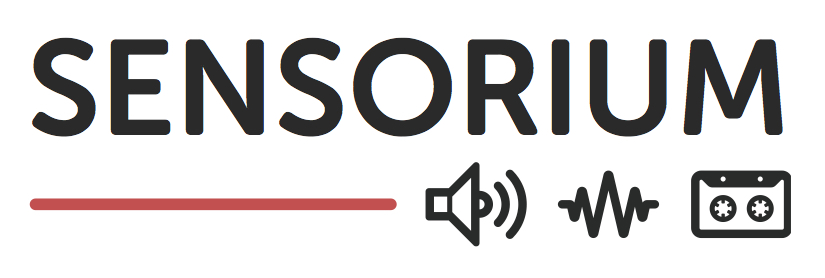A medium is a medium is a medium is a medium
Welcome adress
DOI:
https://doi.org/10.3384/sens.2002-3030.2016.1.11-14Sammendrag
At the symposium Media Archaeology and Artistic Practice held September 17th 2015, a discussion was raised by invited keynote speaker Garnet Hertz, artist and associate professor at Emily Carr University, concerning the discourse around the media archeological lab and the humanities lab, and if this perhaps was mainly a question of naming. Can the desire to construct labs instead of other, more traditional, humanist and artistic workspaces such as studios, seminar rooms, offices etc. from one particular perspective be seen as a superficial gesture, one that boils down to attaching a new name to the same old practice, in order to get hands on new funding? As the discussion progressed it was stressed, that there are obvious attractions in this particular name – connoting hard science, collective work processes and experimental approach – as well as a material hands-on-quality that agrees with the theoretical discours of media archaeology. But also, that there are in fact substantial qualities of the lab as a concrete space that could generate new energy and new types of knowledge production when transferred to the artistic and humanistic context.
The conversation made me think of the title of our present conference A medium is medium is medium as it also addresses the question of what is in a name.
The title is a quote from Friedrich Kittler, who in Discourse Networks 1800/1900 uses the sentence to stress the untranslatable quality of the medium: The important fact that any transfer from one medium to another involves a distortion – and thus always will be to some degree arbitrary. But in Kittler the sentence is also a reminder about how the medium of language, as it is put to use in literature, has been considered as something close to an ideal channel – a channel of communication working without friction. By adding a third and final medium to his sentence, Kittler reminds us, essentially, that a medium is never just a channel or a technology of communication – it is always also something more. The material base makes a difference.
Even if Kittler does not give a reference, it is rather obvious that he is here paraphrasing Gertrude Stein’s signature sentence ”a rose is a rose is a rose is a rose” and as a Stein scholar I have not been able to refrain from a mild irritation that Kittler missed a part, he has only three times medium against Stein’s four times rose.
Stein’s sentence brings us back to the question of what’s in a name. As has often been suggested, it addresses the famous passage from Romeo and Juliet, where Juliet is trying to disavow the importance of the name (due to the fact that her beloved Romeo is a Montague):
What’s in a name.
that which we call A rose
by any other name would smell as sweet
As we all know, in the tragedy, the power of the name proves invincible and Juliet’s pragmatic attitude does not help her much against the ruling discourse of the encompassing society breeding strife between her name and Romeo’s. And even if Stein’s sentence in the first instance may look like merely a very insistent statement that a rose, when all is said and done, is still a rose – just as Juliet claims – there is a lot more to say about it.
Stein herself said, among other things:
When I said.
A rose is a rose is a rose is a rose.
And then later made that into a ring I made poetry and what did I do I caressed completely caressed and addressed a noun.
(“Poetry and Grammar,” Lectures in America )
She also claimed, that with this sentence, she made the rose red for the first time in English poetry for at least 100 years (and knowing Stein one shouldn’t miss the homonymic play upon red – it is both the color and the past tense of read. With Stein’s sentence – the rose is both red and read for the first time.) What is particularly elegant in this embrace by Stein’s of a noun, or of a name, is that in this very embracing movement she is putting the word’s grammatical status into serious doubt. When the third part is added to “a rose is a rose” an unresolvable syntactical confusion is introduced – it becomes impossible to determine whether the second part is the end or the beginning of a clause – but as the forth part is introduced both the sounds and the grammar of language starts dissolving and transform into genuine play. And every time the words “a rose”, the article and the noun, are repeated and “caressed” they sound more like a verb – “arose”. What seemed like an ultimate insistence upon the reality of a noun, is suddenly transformed into a verb – what appeared to be pure substance turned into action.
Similarly current research in the fields of media history and media aesthetics – if we are to take the varied contributions made to this conference as representative – is concerned with regarding the medium as something more than an artifact: To take into account the essential materiality that, according to Kittler, is irreducible in any communication, but to also continuously understand the medium as something relational and entangled in dynamic processes.
The conference A medium is a medium is a medium was intended as a kick-start of the network Sensorium for young researchers working in the field between aesthetics, technology and materiality. What the network is going to be and do in the future is up to us to work out at this conference and in the time to come. A warm welcome to every one!
Nedlastinger
Publisert
Utgave
Seksjon
Lisens
Opphavsrett 2016 Solveig Daugaard

Dette verket er lisensiert under Creative Commons Attribution-NonCommercial-NoDerivatives 4.0 International License.






